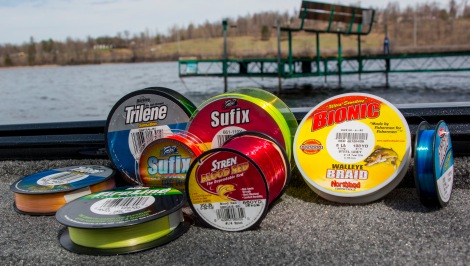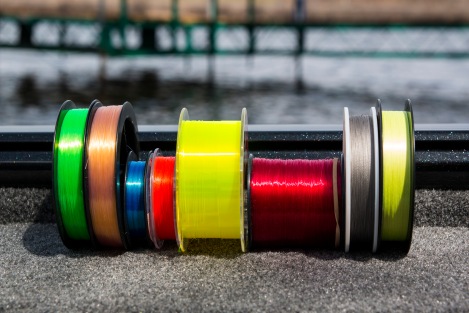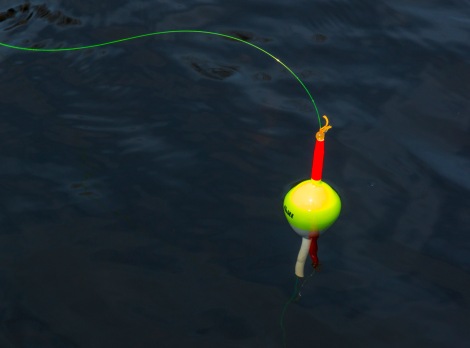 There are many ways to tip the odds in your favor when you’re angling for the next big catch. One of the easiest, least expensive and most effective is by spooling up with line that’s a perfect fit for the conditions at hand. After all, line plays a key role in many facets of fishing, from the presentation phase to strike detection, hook-setting and fighting fish.
There are many ways to tip the odds in your favor when you’re angling for the next big catch. One of the easiest, least expensive and most effective is by spooling up with line that’s a perfect fit for the conditions at hand. After all, line plays a key role in many facets of fishing, from the presentation phase to strike detection, hook-setting and fighting fish.
Many anglers make this connection and work hard to choose lines with the right blend of strength, abrasion resistance, size and handling characteristics. But veteran fishing guides and decorated touring pros Scott and Marty Glorvigen maintain that few fishermen pay full attention to one of the most critical aspects of line selection—the color factor.

“People tend to forget about using line color as a tool to catch more fish in different situations,” says Scott. “But choosing the right color can be key to success.”
Take spring walleye fishing on rivers, for example.
“Colored line that’s easy to see is a godsend when vertical jigging early season walleyes,” says Marty. “You can tell whether the bait is directly below the rodtip, which is where you want it for optimum control and to avoid snags as much as possible. If the line is perpendicular to the surface, you’re fine. But if it runs up- or downstream, you need to adjust your boat speed or jig weight.”
In river jigging mode, the hard-fishing brothers typically toggle between superlines such as Northland Bionic Walleye Braid and Berkley FireLine or NanoFil. “These lines have amazingly thin diameters in relation to their break-strength, so there’s less bow from the current,” says Marty. “Plus, there’s almost no stretch, which boosts sensitivity.”
Addressing the color factor, they opt for easy-to-see choices such as Berkley’s High-Vis Chartreuse and Flame Green, and Northland’s Indicator Camo.
A rainbow of different line colors help anglers dial in the right shade for the presentation and conditions at hand.

At least for the mainline. On the business end of the rigging, they spin the color wheel the opposite direction, favoring virtual invisibility instead. “An 18-inch fluorocarbon leader is hard for walleyes to see,” says Scott. “Connect it to your mainline with a small barrel swivel, which also helps prevent line twist.”
Brightly colored lines are also a plus in a number of other presentational scenarios. When pitching jigs to prespawn walleyes schooled in shallow current breaks below spawning shoals, for example, high-vis colors make it easy to see when the line jumps, which is often your only clue that a walleye has inhaled a falling jig.
“The same goes a bit later in the season, when we’re working the edges of bulrushes and emerging weedbeds,” adds Marty.
The Glorvigens’ bulrush pattern coincides with the spring spawning run of various species of shiner minnows, which attracts hordes of hungry ’eyes eager to gorge on the preoccupied baitfish.
Long casts with 1/16- to 1/8-ounce Northland Fire-Ball Stand-Up jigs tipped with live bait or Berkley Gulp! Alive! Minnows are the rule, and colored line aids in strike detection during the slow, methodical, lift-pause retrieve. “Keep your eyes glued to the line, because most strikes come on the fall,” says Scott.
Emerging beds of cabbage and coontail are worked with weedless jigheads. “Pitching a streamlined jig like a Northland Weed-Weasel tipped with a leech or crawler is a great way to target weed-bound walleyes in early summer,” says Marty. “Here, too, line-watching is critical to determine where the jig is and what’s happening to it.”
Using the line as a strike indicator is especially important inside the greenery. “When you’re fishing the edge of the weeds, you can usually wait for a classic walleye thump before you set the hook,” says Scott. “But inside a weedbed, the fish are more likely to flare their gills and inhale the jig from an ambush point than they are to run it down and attack it. So bites are lighter and harder to feel. You have to rely on seeing the line stop, twitch or move sideways to tell when a fish takes the bait, which makes colored line a great choice.”

The Glorvigens’ also favor brightly colored line when slip-bobber fishing on isolated weedbeds and rocky structure in mid- to late summer. “If you’ve ever panicked because you can’t see your bobber, you’ll appreciate the benefit of fishing with high-visibility line,” says Marty. “With colored line, you can follow the line right out to the bobber, or at least see which direction the fish has taken it.”
High-visibility line shines in a variety of applications where it’s important to see your line, including slip-bobber fishing.
In a similar vein, high-vis lines make it easy to tell where a variety of lures are on the cast or troll. “Whether you’re long-lining stickbaits in shallow water or lobbing jigs into flooded timber, life is a whole lot easier when the line tells you exactly where your lure is and what it’s doing,” says Scott.
By All Creation Outdoors
